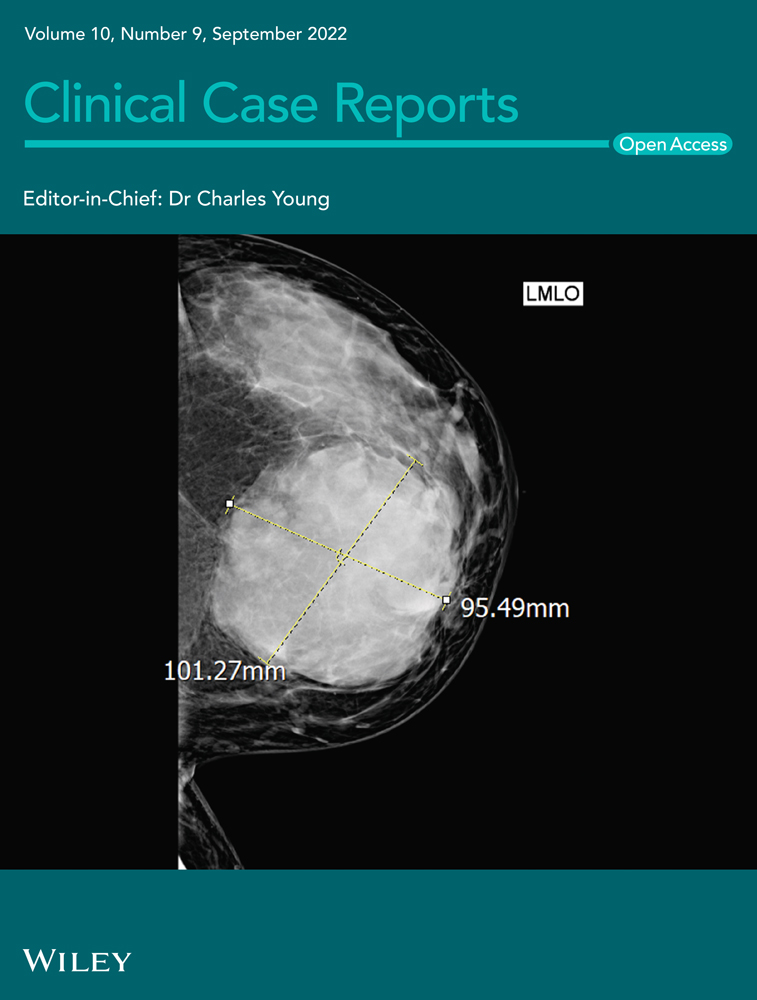Small cell osteosarcoma of the rib: An exceptional localization
Abstract
Small cell osteosarcoma is a rare sub-type of osteogenic malignant tumors. Rib localization is uncommon. Histological examination is an important step to make the difference with similar tumors like Ewing's sarcoma. Surgical resection is the unique curative treatment. The prognosis remains poor even with adjuvant treatment.
1 INTRODUCTION
Small cell osteosarcoma SCO is a rare sub-type of osteogenic malignant tumors, having the same microscopic features as Ewing's sarcoma. However, unlike Ewing's sarcoma, it is associated with variable degree of osteoid formation. It occurs, mostly, in the metaphysis of long bones.1 Localization on the rib is exceptional, and, to the best of our knowledge, only two cases were presented in the literature.
2 OBSERVATION
An 18-year-old woman who suffered from right basi-thoracic pain and appearance of a swelling at the level of the 10th right rib. Chest CT showed a heterogeneous hyper vascular mass, located on the 10th right rib and measuring 106 × 93 × 110 mm. The mass was heterogeneous with several sites of necrosis. There were osteolysis of the rib with bifocal cortical rupture. The mass was in a tight contact with the liver through the diaphragm, which was partially invaded. Surgical biopsy was performed. The mass was composed of small round cells with round uniform nuclei and PAS positive cytoplasm. Tumor cells demonstrate a diffuse membranous CD99 positivity. Desmin, myogenin, chromogranin, synaptophysin, and keratin were negative (Figure 1).
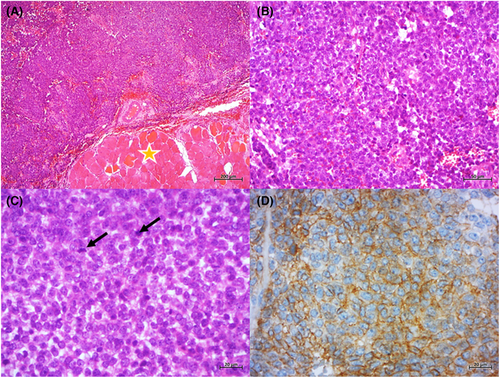
The diagnosis of Ewing's sarcoma was made. The patient received 6 cycles of chemotherapy (vincristine, ifosfamide, doxorubicin, and etoposide). A post therapy chest CT scan showed almost the same initial findings (Figure 2). Surgical resection was indicated after multidisciplinary team discussion. Resection consisted of a total resection of the 10th right rib with sarcoma, partially extended to the 9th and 11th right ribs and to the diaphragm. There were no signs of direct extension to the liver. Chest wall repair was performed with a polypropylene mesh covered by a latissimus dorsi muscle flap (Figure 3).
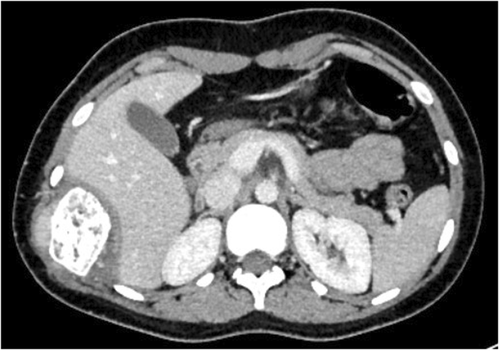
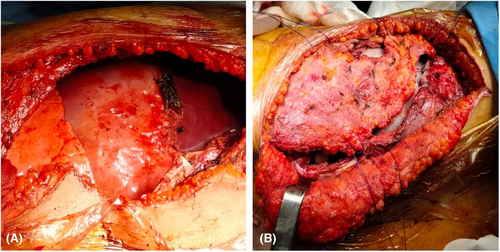
Postoperative course was uneventful. The pathologic examination of the specimen showed a small cell proliferation with foci- of lace-like osteoid production (Figure 4). The presence of osteoid production excluded definitely the diagnosis of Ewing's sarcoma, and no further immunohistochemical studies were performed. Finally, the diagnosis of a 12 cm SCO of the 10th right rib, infiltrating adjacent soft tissues, with 20% of tumor necrosis was established. Surgical margins were negative. Adjuvant chemotherapy with Methotrexate (12 g/m2) was indicated after multidisciplinary concertation, in association with adjuvant radiotherapy (45Gy). Actually, the patient is well, with a good wound cicatrization. Overall survival is of 10 months without signs of local recurrence.
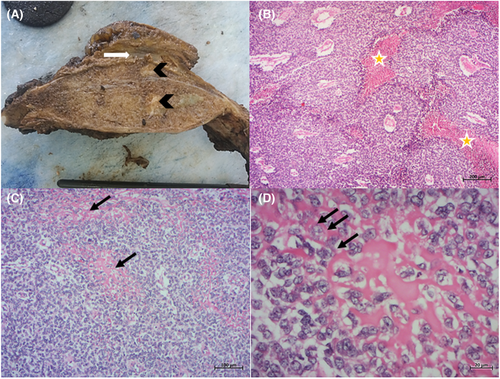
3 DISCUSSION
SCO is a very rare type of bone malignant tumors arising usually from long bones (femur, tibia, and humerus). Average age is 20 years [6–83 years], but most of the patients are younger than 20.2 Females were more affected than males, with a male to female sex ratio of 4/5.3 This osteosarcoma rarely affects shorts bones, and rib-localization is very uncommon. To the best of our knowledge, only two cases were described in the literature.4, 5 Table 1 summarizes the characteristics of these two cases comparing to our case.
| Findik and Al (2012) | Park and Kim (1999) | Our Case | |
|---|---|---|---|
| Age | 28 years | 37 years | 18 years |
| Localization | Left anterolateral region of 6th and 7th ribs | Right 10th and 11th ribs | Right 10th rib |
| Measurements | Not mentioned | 50*50 mm | 109*63*110 mm |
| Preoperative Histological Assessment | Malignant mesenchymal tumor OR osteosarcoma | Not mentioned | Ewing's sarcoma |
| Protocol Of Chemotherapy | Not mentioned | Not mentioned | VIDE (vincristine, ifosfamid, doxorubicin, etoposide) |
| Survival | 17 months | Not mentioned | 10 months |
Histopathological investigation plays an important role in the diagnosis. In fact, small round cell lesions of the bone encompass a large heterogeneous group of tumors and tumor-like lesions. The main differential diagnosis of SCO is Ewing's sarcoma. In hematoxylin and eosin-colored slides, osteoid production is the characteristic pathologic feature of SCO and may easily distinguish it from Ewing's sarcoma. However, in small biopsies, osteoid production can be missing. Membranous CD99 staining is sensitive but not entirely specific for the diagnosis of Ewing's Sarcoma, as other small round cell tumors may be rarely positive as well.6 In fact, the tumor specimen in our case, was positive for CD99. The immunohistochemical positivity along with the histological features and the cytoplasmic PAS positivity led to the erroneous diagnosis of Ewing's sarcoma. Therefore, the diagnosis of Ewing's sarcoma should be confirmed by molecular or cytogenetic studies. These studies will demonstrate the presence of specific Ewing's sarcoma translocations, like EWSR1-FLI1 fusion gene.6 Unfortunately, molecular studies are unavailable in our institution. In the diagnosis of small round cell tumors, several entities such as alveolar rhabdomyosarcoma, retinoblastoma, hepatoblastoma, lymphoblastic lymphoma, nephroblastoma (Wilms' tumor), synovial sarcoma, and desmoplastic small round cell tumor should be included. Immunohistochemistry is sufficient to exclude these conditions.1, 6 Surgical resection is the unique curative treatment of SCO.7 Postoperative chemotherapy and radiotherapy may be administered. Vincristine, adriamycin, actinomycine D, and cyclophosphamide are the most common administrated agents. However, chemoradiotherapy together is not necessary without the evidence of any malignant cells on the surgical margin or the presence of distant metastasis.8 The 5-year survival rate for the classic osteosarcoma is 77%, whereas it is 28% for small cell osteosarcoma.5, 9
4 CONCLUSION
SCO of the ribs is exceptional and should be kept in mind in the management of ribs' tumors. Early diagnosis is important for better-improved prognosis. The integration of clinical, radiologic, pathologic, and ancillary test results, including immunohistochemical and molecular results, is necessary to establish the right diagnosis. Surgical resection is the only curative treatment, and it should be as complete as possible. Adjuvant chemotherapy may improve survival despite the poor prognosis of this aggressive type of bone malignant tumors.
AUTHOR CONTRIBUTIONS
Walid ABID, Meriam TRIKI, and Ghassen BEN HLIMA designed and prepared the manuscript. Zied CHAARI, Abdessalem HENTATI, and Imed FRIKHA reviewed and corrected the manuscript.
ACKNOWLEDGMENT
None.
FUNDING INFORMATION
No funding for this manuscript.
CONFLICT OF INTEREST
The authors declare no conflict of interest.
CONSENT
Written informed consent was obtained from the patient to publish this report in accordance with the journal's patient consent policy.
Open Research
DATA AVAILABILITY STATEMENT
Data sharing not applicable to this article as no datasets were generated or analysed during the current study



